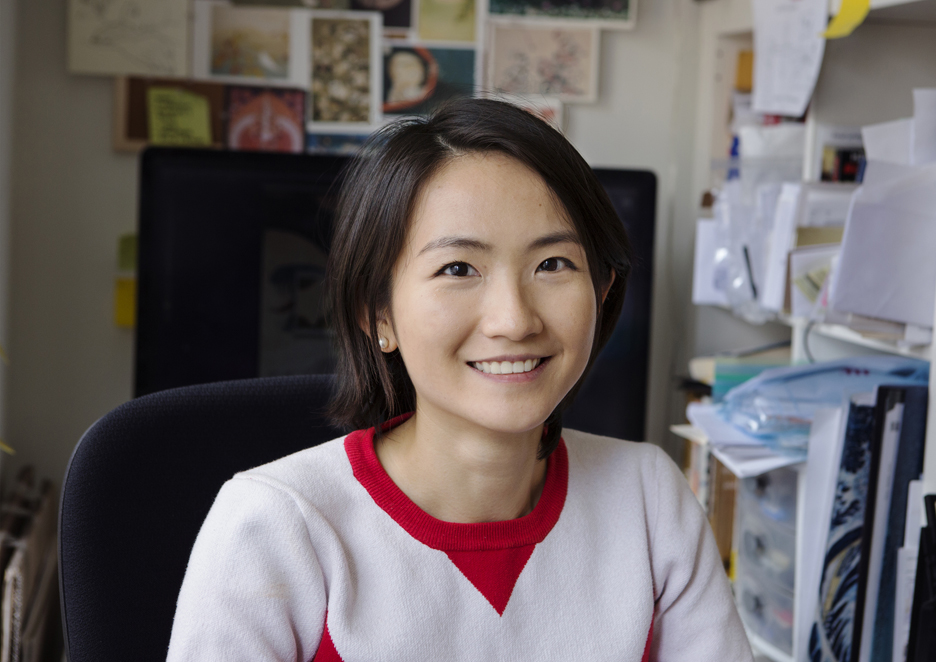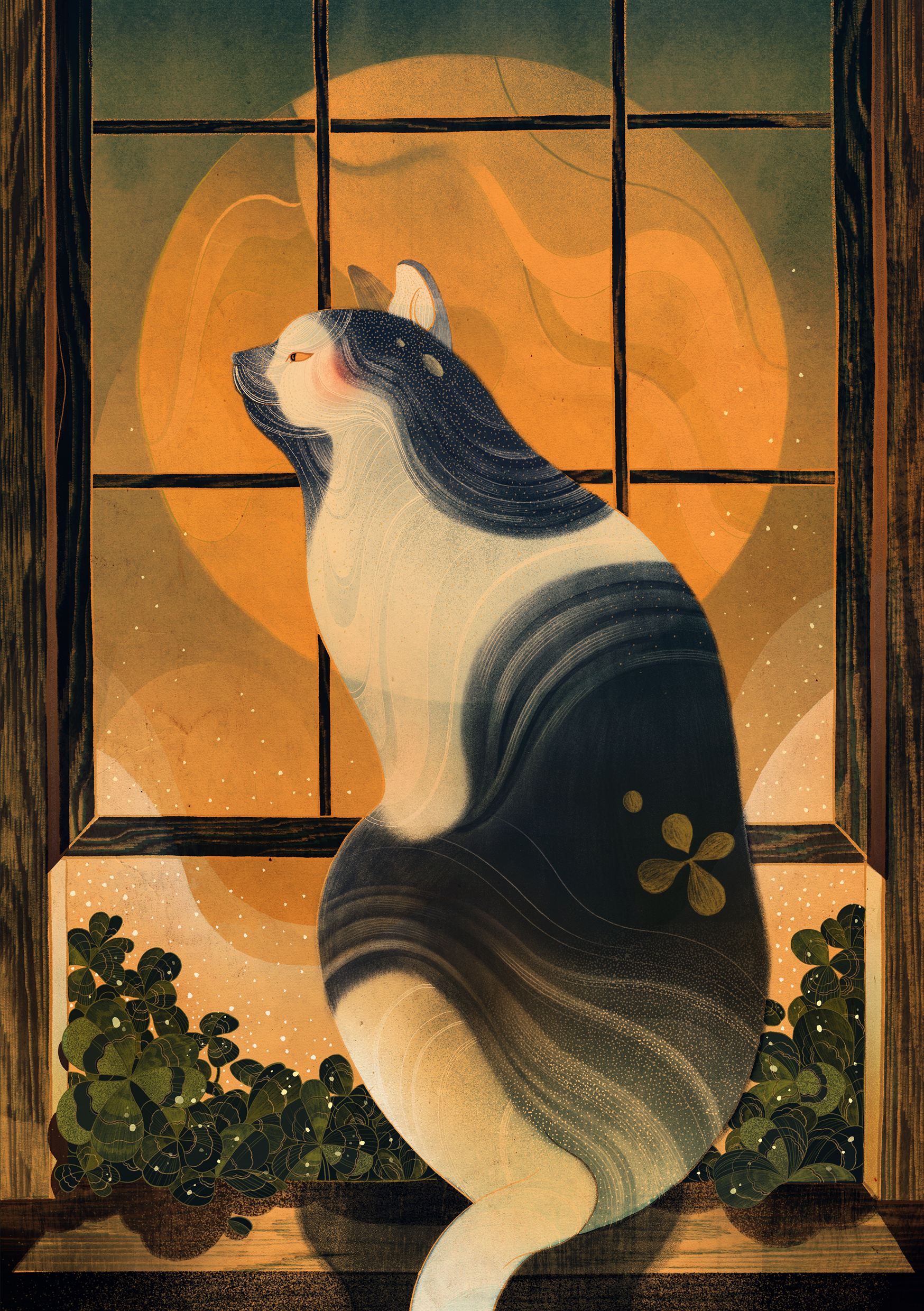VICTO NGAI: LOS ANGELES VIA HONG KONG ILLUSTRATOR EXTRAORDINAIRE
Los Angeles-based illustrator Victo Ngai was raised in Hong Kong and went on to Rhode Island School of Design, graduating in illustration. In addition to being a Forbes 30 Under 30 (Art and Style) honoree and a Society of Illustrators NY Gold Medalist, her work has received recognition from the New York Times, Communication Arts, American Illustration and many others making her one of the most distinguishable illustrators in the field today. We caught up with her at BODW in Hong Kong.
What would be the difference for you being an illustrator in Hong Kong VS the USA?
It would be a lot more difficult to make a living solely on illustration in Hong Kong – most of the illustrators I know there have a second job as graphic designer or art teacher. There isn’t much of an editorial illustration market there neither. For the publications that actually use illustrations, their budgets are much lower compared to the US due to the small circulations. The concept of illustration is relatively new as well. When people ask me what I do for a living, I just tell them I draw as the word “illustrator” often invite blank stares…
How have the realities of migration impacted your work as an artist?
Living in a foreign land forced me out of my comfort zone which allowed me grow as a person and as an artist. The disorientation of cultural shocks allowed me to examine familiar things with a fresh pair of lenses. All these helped me think out of the box and come up with visuals which combines Eastern and Western metaphors. After All, the life of an art piece comes from the artist’s own experiences.
Was illustration something you always knew you wanted to do?
I have always loved to tell stories and communicate ideas with drawings since I was a kid, but have not heard of the term “illustration” until RISD. I entered the school with much passion about art but the vaguest idea of what I will do upon graduation. During freshmen year, I actually declared major in graphic design but later realized what I had in mind was really illustration.
When and how did you land your first commission?
A classmate commissioned me to do a comic stripe and paid me generously in candies in third grade. If we are talking about professional commission, I was hired by SooJin Buzelli, creative direction of Asset International (publisher of Plansponsor, Plansponsor Europe, Planadviser and aiCIO), during my junior year in RISD. I was 20. My portfolio teacher Chris Buzelli is the husband of SooJin. I did a piece for Chris’s class which caught the attention of SooJin. She then decided to print it in her magazine (thank god). That’s how we started our 6 years and counting working relationship.
What do you like most about being a freelance illustrator?
Getting paid to do what I love. Also the freedom of working from anywhere and at anytime.
Is freelancing for everyone?
No. Freelance illustration is more than a job – it’s a lifestyle.
A freelance illustrators wear many hats – the studio CEO, an artist, an accountant, a PR as well as a studio janitor. One needs to be very discipline on working and, resting. For me, sometimes it becomes impossible to separate work and personal life. I often have to cancel plans because of rush jobs and revisions. Also, without any official office hours and holidays, it’s very easy to overwork. Also, freelancers are attaching their names to the work they are selling, which is the product of one’s thought processes, habits, taste and preferences. This makes it quite difficult not to take things personally when the work is not going well or rejected.
Do you feel this has any bearing on the types of projects you’re offered, and if so, is this a good or bad thing?
It definitely does. Obviously if Time magazine wants a realistic portrait of Obama, they are not going to come to me. And that’s ok, as I am not interested in doing realistic portraits. There are all kinds of jobs out there for all kinds of artists, it’s physically impossible for one person to do all of them. All of my clients may add up to be less than a couple percent of the entire industry and that’s enough to keep me more than busy. It’s good to be mindful to your client’s need but it’s more important to be aware of what makes yourself happy. No one goes into art for money or power, we do it because we enjoy it.
Don’t sacrifice the joy of art-making for the market , otherwise it’s hard to have a long and sustainable career. One just need to figure out his/her niche.
(And don’t get me wrong, style is important too as that’s your brand-what makes you stand out to art directors, as well as the vehicle to carry your idea. I like to emphasize ideas as many students tend to overlook that.)
What has influenced your design and its aesthetic?
Asian influences when I was growing up. Living at different countries, traveling, reading, being around other creatives. It’s hard to pinpoint one or two things as I think my work is an extension of myself and my experiences.
How do you strike a balance between your artistic sensibilities and producing commercial art?
I try to treat every piece like a personal work, sneaking in small details that makes me happy as I believe great work comes from honest work. If I am interested in what I am doing, hopefully that passion would translate. Of course, there are times when clients have very specific requirements which I do not agree with, I would try to let them see my point the best I can. If it doesn’t work, I have to remind myself that sometimes a job is a job and distant myself from the piece and find other creative outlet so I wouldn’t take it too personally when the piece is “sabotaged”.
Do you think art can be a means for social change? If so, how?
Definitely, good art do not tell a story but “paint” it with vivid colors. While using art as a mean of communication, the ideas are appealed through emotions . As a result, audiences not only understand the messages intellectually, but emphasize with their hearts. That is why art is so often used in political propagandas and commercials. For the same reasons, art can become a powerful mean for social changes.
VICTO NGAI: LOS ANGELES VIA HONG KONG ILLUSTRATOR EXTRAORDINAIRE
Read more of about Hong Kong’s BODW here










[…] Angeles-based illustrator Victo Ngai (read our interview here) was raised in Hong Kong and went on to Rhode Island School of Design, graduating in illustration. […]